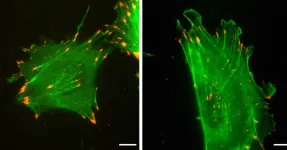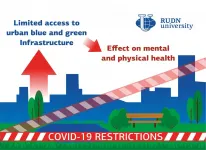The research team estimates that this worst-case scenario would mean the population at risk of the diseases might increase by up to 4.7 additional billion people (relative to the period 1970-1999), particularly in lowlands and urban areas, if temperatures rise by about 3.7°C 1 by 2100 compared to pre-industrial levels.
The study was led by the London School of Hygiene & Tropical Medicine (LSHTM) with partners from Umeå University, Sweden; Abdus Salam International Centre for Theoretical Physics, Italy; University of Heidelberg, Germany; and the University of Liverpool.
The team used a range of models to measure the potential impact of climate change on the length of the transmission season and population at risk of two important mosquito-borne diseases - malaria and dengue - by the end of the 21st century compared with 100 years earlier. They made their predictions based on different levels of greenhouse gas emissions, population density (to represent urbanisation) and altitude.
For malaria, the modelling for the worst-case scenario estimated a total of 8.4 billion people being at risk in 2078 (ie 89.3% of an estimated global population of 9.4 billion) compared with an average of 3.7 billion over the period 1970-1999 (ie 75.6% of an estimated global population of 4.9 billion)2. For dengue, the modelling estimated a total of 8.5 billion people at risk in 2080 compared with an average of 3.8 billion in 1970-1999.
Malaria suitability is estimated to gradually increase as a consequence of a warming climate in most tropical regions, especially highland areas in the African region (eg Ethiopia, Kenya and South Africa), the Eastern Mediterranean region (eg Somalia, Saudi Arabia and Yemen), and the Americas (eg Peru, Mexico and Venezuela). Dengue suitability is predicted to increase mostly in lowland areas in the Western Pacific region (eg Guam, Vanuatu, Palau) and the Eastern Mediterranean region (eg Somalia and Djibouti), and in highland areas in the Americas (eg Guatemala, Venezuela and Costa Rica).
The research predicts there will be a northward shift of the malaria-epidemic belt in North America, central northern Europe, and northern Asia, and a northward shift of the dengue-epidemic belt over central northern Europe and northern USA because of increases in suitability.
All the scenarios predicted an overall increase in the population at risk of malaria and dengue over the century. However, the impact would reduce substantially if action were taken to reduce global emissions, according to the modelling.
In the scenario where emissions are reduced the most - greenhouse gas emissions decline by 2020 and go to zero by 2100 and global mean temperature increases by 1°C between 2081 and 2100 - an additional 2.35 billion people are predicted to be living in areas suitable for malaria transmission. For dengue in this scenario, the modelling suggests 2.41 additional billion people could be at risk.
The study highlighted that if emission levels continue to rise at current levels, tropical high-elevation areas (more than 1,000 metres above sea level) in areas such as Ethiopia, Angola, South Africa, and Madagascar could experience up to 1.6 additional climatically suitable months for malaria transmission in 2070-2099 compared with the period 1970-1999.
The study predicted that the length of the dengue transmission season could increase by up to four additional months in tropical lowland areas in south east Asia, sub-Saharan Africa, and the Indian sub-continent.
First author Dr Felipe J Colón-González, Assistant Professor at LSHTM, said: "Our results highlight why we must act to reduce emissions to limit climate change.
"This work strongly suggests that reducing greenhouse gas emissions could prevent millions of people from contracting malaria and dengue. The results show low-emission scenarios significantly reduce length of transmission, as well as the number of people at risk. Action to limit global temperature increases well below 2°C must continue.
"But policymakers and public health officials should get ready for all scenarios, including those where emissions remain at high levels. This is particularly important in areas that are currently disease-free and where the health systems are likely to be unprepared for major outbreaks."
Climate change has increased concerns that mosquito-borne disease transmission will intensify through increased vector survival and biting rates, increased replication of pathogens within vectors, shorter reproduction rates, and longer transmission seasons.
Malaria and dengue, the most important mosquito-borne global threats3, are being found in more areas, gradually emerging in previously unaffected places, and re-emerging in places where they had subsided for decades. Malaria is shifting towards higher altitudes, and urbanisation is associated with increasing dengue risk.
While differential effects of climate change with altitude and urbanisation have been previously discussed, they have not been quantified globally for different levels of altitude and urbanisation, until now.
The research team's methods involved identifying the risk for each World Health Organization (WHO) region4 using six emission and socioeconomic scenario combinations ranging from conservative to business as usual5, and six disease models.
Although the worst-case scenario models indicated that some areas could become too hot for some mosquito species, that situation would likely cause other health effects such as heat-related mortality, reduced labour productivity, and reduced food production.
Moreover, mosquito-borne diseases could become a bigger problem elsewhere, including expanding further north and into higher altitude and temperate regions, as climatic conditions such as temperature and rainfall enable malaria and dengue to thrive in different parts of the world.
Senior author Dr Rachel Lowe, Associate Professor and Royal Society Dorothy Hodgkin Fellow at LSHTM, said: "A number of interventions will be needed to adapt to the health effects of a warmer and more urbanised world and to prepare for all scenarios.
"Our findings stress the importance of increased surveillance in potential hotspot areas to monitor the emergence of diseases, especially in places without previous experience of dengue or malaria.
"Public health action will be particularly important in areas where transmission is occasional because public health systems might be unprepared to control and prevent these diseases."
The authors acknowledge limitations in the study including the fact they did not consider the effects of socioeconomic development, disease and vector evolution, or the development of more effective drugs and vaccines, all of which could lead to important differences in the amount of risk simulated. The estimates are also constrained by the selection of climate and disease models, and the selected combinations of emission and socioeconomic scenarios. In future experiments, researchers could incorporate larger model ensembles and scenario combinations to provide a richer view of the uncertainty around the estimates.
INFORMATION:
For more information or interview requests, please contact press@lshtm.ac.uk.
A copy of the embargoed paper is available upon request. Once published the paper will be available here: http://www.thelancet.com/journals/lanplh/article/PIIS2542-5196(21)00132-7/fulltext
Publication:
Felipe J Colón-González at al. Projecting the risk of mosquito-borne diseases in a warmer and more populated world: a multi-model multi-scenario intercomparison modelling study. The Lancet Planetary Health.
The researchers are funded by the UK Space Agency, Royal Society, UK National Institute for Health Research, and Swedish Research Council.
Notes to Editors
1. Range = 2.6-4.8C
2. Overall global population was, on average, 4.9 billion over 1970-1999 and is predicted to rise to 9.4 billion in 2080.
3. There are an estimated 230 million cases of malaria per year, and about 93% of those cases occur in Sub-Saharan Africa. The estimated burden of dengue is estimated at about 390 million annual cases.
4. African Region (AFR), Region of the Americas (AMR), South-East Asian Region (SEAR), European Region (EUR), Eastern Mediterranean Region (EMR), Western Pacific Region (WPR).
5. Scenarios:
RCP2.6-SSP1: stringent pathway with greenhouse emissions declining by 2020 and go to zero by 2100, low challenges to the mitigation of such emissions, and low challenges for adaptation to the new conditions
RCP2.6-SSP2 stringent pathway with greenhouse emissions declining by 2020 and go to zero by 2100, medium challenges to mitigation and adaptation
RCP4.5-SSP2 Intermediate greenhouse emission scenario with emissions peaking at about 2040, then decline, medium challenges to mitigation and adaptation
RCP6.0-SSP2 greenhouse emissions peak by 2080 and stabilise shortly after 2100 by the application of a range of technologies and strategies for reducing greenhouse gas emissions, medium challenges to mitigation and adaptation
RCP8.5-SSP2 increasing carbon emissions over time, medium challenges to mitigation and adaptation
RCP8.5-SSP5 increasing carbon emissions over time, high challenges to mitigation with low challenges to adaptation
The London School of Hygiene & Tropical Medicine (LSHTM) is a world-leading centre for research, postgraduate studies and continuing education in public and global health. LSHTM has a strong international presence with over 3,000 staff and 4,000 students working in the UK and countries around the world, and an annual research income of £180 million.
LSHTM is one of the highest-rated research institutions in the UK, is partnered with two MRC University Units in The Gambia and Uganda, and was named University of the Year in the Times Higher Education Awards 2016. Our mission is to improve health and health equity in the UK and worldwide; working in partnership to achieve excellence in public and global health research, education and translation of knowledge into policy and practice.
http://www.lshtm.ac.uk





